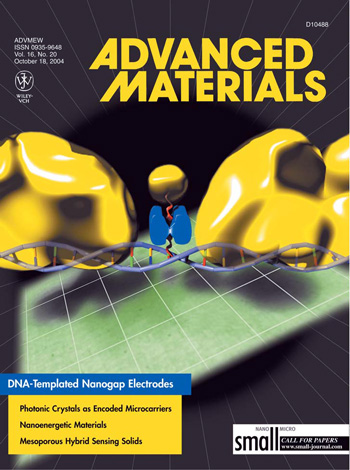| 2005 |

|
YEAR BOOK |
University College Dublin
|
The Nanochemistry Group at University College Dublin and the Centre for Research in Adaptive Nanostructures and Nanodevices
|
An important application of our work is in the design and manufacture of next generation information processing and storage technologies. The driver here is further miniaturization of the wires and switches that comprise the integrated circuits on which these technologies are based, and the increases in speed and reductions in cost that can be achieved as a result.
In this context, the Nanochemistry Group has directed significant effort at the preparation and characterization of the building blocks from which these nanoscale architectures are assembled, including supermolecules and biomolecules and nanoparticles and nanorods. The Group has also directed significant effort at understanding the forces that act between these nanoscale building blocks in solution and that direct their assembly.
The Nanochemistry Group has also directed significant effort at the preparation and characterization of nanopatterned substrates that can be used to organize the nanoscale architectures assembled in solution. Again we are interested in the forces that act between the patterned substrate and the nanoscale architecture in solution and that direct their organization.
Building on these general capabilities we have focused on the assembly of nanoscale wires and switches in solution and their organization � i.e. integration � at patterned substrates. A key milestone is the use of DNA arrays to template the assembly and organization of integrated arrays of nanowires and switches.
Shown left is the cover illustration from a recent issue of Advanced Materials (2004, 20, 1977) in which we reported the DNA templated assembly of a single electron transistor. This cover shows a transistor consisting of two nanowires separated by a gap of 10 nm in which is located a 5 nm diameter gold nanoparticle. All of the building blocks of this functional nanoscale architecture were assembled and organized using a DNA template absorbed on a patterned substrate.
Recently we have initiated a significant effort in the assembly and organization of nanoscale architectures based on carbon nanotubes, which together with the efforts described above represent an internationally competitive integrated program.

|
|
Contact: Prof. Donald Fitzmaurice,
The Nanochemistry Group,
Department of Chemistry,
University College, Belfield,
Dublin 4;
E-mail: [email protected]